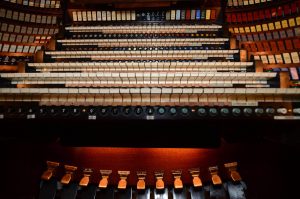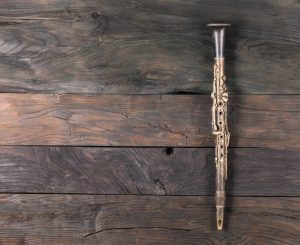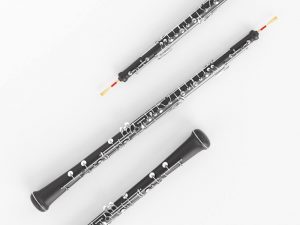Instruments playing in unison is a relaxing experience that appeals to people of all ages. Many musicians practice for long periods of time each day in order to perfect their craft. Countless instruments can produce stunning tones, but many of them are also extremely loud. Experts say that long-term exposure to noises louder than 70 decibels can harm your ears, while exposures louder than 120 decibels can cause immediate hearing loss. Incredibly, a number of musical instruments are capable of producing sound levels in excess of 120 dB. Listed below are the loudest musical instruments and their corresponding decibel levels
1. The Boardwalk Hall Auditorium Organ

First on our list of the loudest musical instruments is the organ of the Boardwalk Hall auditorium is the loudest organ in the world. It is unrivaled in terms of pure acoustic power and size.
It was built by the Midmer-Losh Organ Company of Boston, Massachusetts, in 1932. (USA). The organ is made uLp of 33,112 pipes (with lengths ranging from a few millimeters to over 20 meters), 7 keyboards with 1,439 keys, 221,284 kilometers of wire, and 68,580 meters of lumber.
(More than 10,000 board feet of lumber is contained in the 12 lowest pipes, enough to construct a house). With seven manuals and 449 ranks, the organ has a 64-foot Diaphone Profunda, ten 32-foot ranks, and wind pressure of less than 100 inches, compared to most organs’ 10 inches. Without a doubt, the organ is a technological and musical marvel.
Range
In terms of volume, it can produce sound that is six times as loud as a steam train’s horn. As a result, we’re looking at a possible 750dB, which is enormous for filling a 41,000-seat auditorium with sound.
2. Trombone
![]()
Because of its length and girth, the trombone is another extremely loud musical instrument. Brass instruments are known for their flamboyantly loud and deafening sounds.
Straight tenors, trigger-type tenors (also known as F-rotors or F-attachments), and bass trombones are the three most common trombone variations out of a total of thirteen.
The bass trombones are the loudest and largest of all, with diameters ranging from 9.5 to 11 inches and have the greatest bore. The trombone is comparable to a huge trumpet, only that the player adjusts the length of the tube by pushing and pulling on the slide.
What makes the trombone different?
To change the pitch on most brass instruments, valves are used, while trombones use a telescopic slide mechanism.
Range
The trombone reaches a maximum volume of around 115 decibels. This is deafeningly loud.
3. Clarinet

The clarinet is one of the oldest woodwind instruments. It is said to have been invented in the early 1800s by Johann Christoph Denner, a Nuremberg instrument maker.
It possesses the largest register of any wind instrument and, as a result, deserves to be included on this list. As an aerophone, Clarinet acoustics is determined by the reed and mouthpiece, the bore and the tone holes. When the player breathes into the mouthpiece, the solitary reed attached to the mouthpiece vibrates, thus, producing sound.
By covering and uncovering holes in the tube, the speed and size of the vibrations produced can be controlled. There are a variety of pitches that can be generated by varying the number of holes covered.
Despite its small size, the clarinet can produce powerful notes. This item is due to the fact that, unlike most other woodwind instruments, it is the only reed instrument with cylindrical bores, which means that the empty space inside the instrument remains the same diameter throughout its entire length.
Amongst the various types of clarinets, the B flat clarinet, also known as the soprano clarinet, is the loudest. It is the most common clarinet that can be used in all types of music, and it is a Bb instrument, as the name suggests.
Range
When played loudly, a clarinet can reach 85 – 114 decibels, which is well above the danger threshold for hearing.
4. Oboe

The oboe is a woodwind instrument with two reeds (as opposed to the clarinet, which has a single reed). Oboes are typically made of wood, but they can also be made of synthetic materials like plastic, resin, or hybrid composites.
There aren’t many oboists because it’s one of the most challenging woodwind instruments to learn.
The clarinet, despite having only one reed, produces a much louder sound than the oboe for the following reasons:
- When you blow into the clarinet’s mouthpiece, there is more room for air to enter the instrument than there is with the oboe’s small double-reed.
- Because the clarinet has only one reed, only the lower lip should cover the lower teeth while enclosing the mouthpiece to prevent the reed from being The oboe embouchure, on the other hand, allows very little air into the instrument, and the teeth around the double-reed should be covered by both upper and lower lips.
- The oboe is a versatile instrument that can play both fast and short notes simultaneously, as well as maintain a long and expressive note.
Range
The treble or soprano oboe is the most commonly used oboe. It reaches a maximum of approximately 112dB.
5. Trumpet

As you might think, this is a well-known fact, so, you’re probably not surprised to see it on this list. The trumpet is a brass instrument that creates a powerful sound.
Most other musical instruments in an orchestra are usually overshadowed by it. The sound of a trumpet is higher pitched and more clear due to the shorter tube length. When a trumpeter performs, he or she is forcing a large quantity of air through a small space, which reverberates and explodes outwards through the bell, producing a loud and robust sound. When played, the trumpet produces a powerful sound.
Correspondingly, of all the trumpet variants available, Bb Trumpets are by far the loudest, and most widely used. The cylindrical bore of the trumpet is responsible for most of this achievement.
This means that the tubing’s diameter remains constant throughout its whole length (except for the bell flare). The trumpet’s distinctive, bright, and concentrated tone comes from this.
Range
The trumpet can make a lot of sound, as you presumably already know. The trumpet can reach a volume of around 110 decibels at its loudest, which is louder than a jet plane taking off from 300 meters away!
Final thoughts on the loudest musical instruments
Our list of the most loudest musical instruments is complete. No matter what instrument you play, it’s always a good idea to invest in some quality earplugs. You may not be able to appreciate the music that you love in the future if your hearing is damaged.
This is especially true if you are a player of one of the instruments included on this list!







